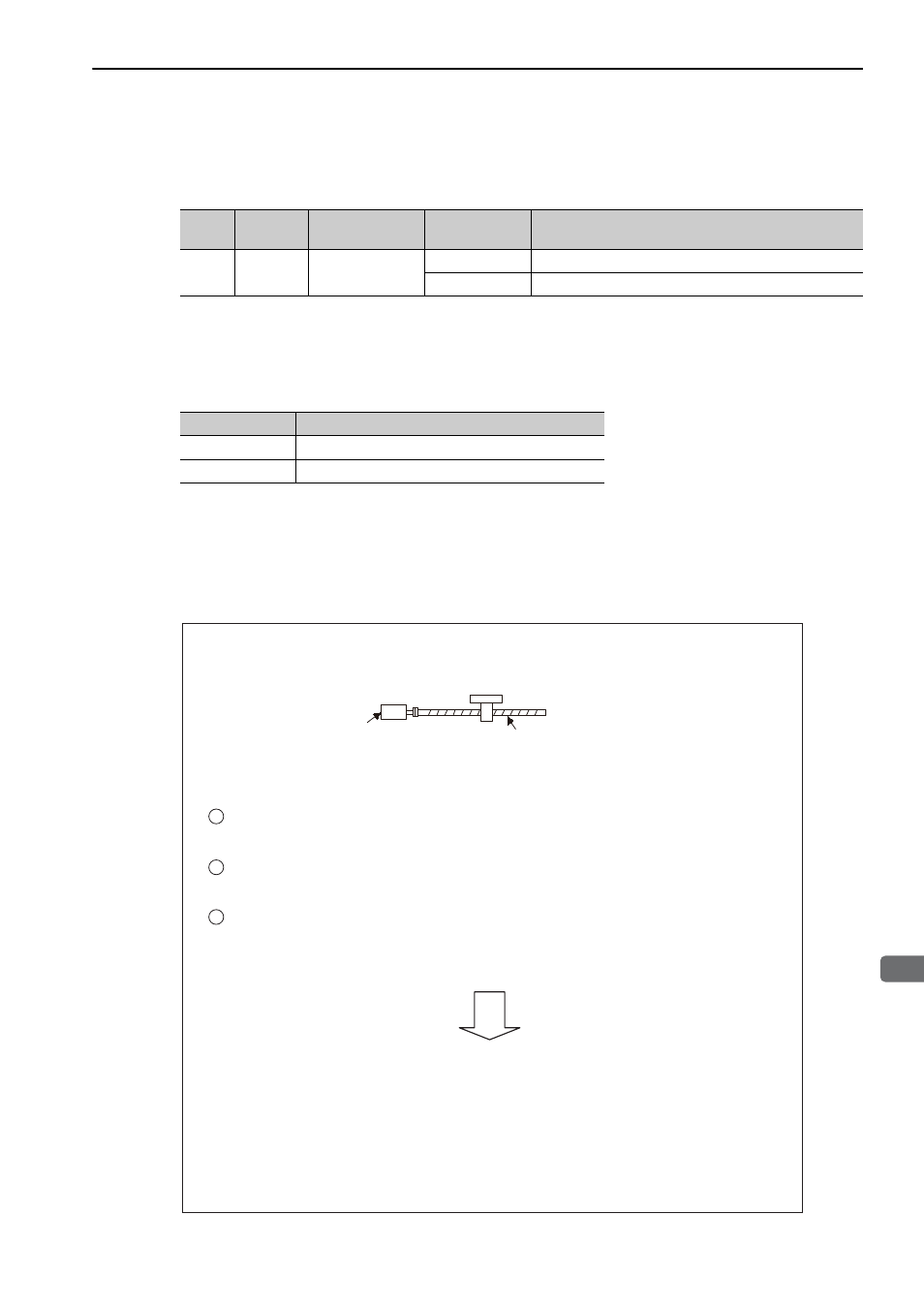4 electronic gear, 4) output signal setting, 5) restriction – Yaskawa Sigma-5 User Manual: Design and Maintenance - Rotary Motors - Analog Voltage and Pulse Train Reference User Manual
Page 153: Rotation

5.4 Position Control
5-39
5
Ope
rat
ion
(4) Output Signal Setting
This output signal indicates when the multiplier of the input reference pulse has been switched for the Refer-
ence Pulse Input Multiplication Switching Input signal (/PSEL).
Note: Use parameter Pn510.2 to allocate the /PSELA signal for use. For details, refer to 3.3.2 Output Signal Allocations.
(5) Restriction
When using the following utility functions, the reference pulse input multiplication switching function is dis-
abled.
5.4.4 Electronic Gear
The electronic gear enables the workpiece travel distance per reference pulse input from the host controller.
The minimum unit of the position data moving a load is called a reference unit.
Note: If the multiplier of the input reference pulse is switched, the input reference pulse from the host controller will be
multiplied by n and defined as the reference unit of the position data. ("n" is the multiplier of the reference pulse.)
Type
Signal
Name
Connector
Pin Number
Setting
Meaning
Output /PSELA
Must be allocated
ON (closed)
The multiplier of the input reference pulse is enabled.
OFF (open)
The multiplier of the input reference pulse is disabled.
Parameter No.
Function
Fn004
Program JOG operation
Fn201
Advanced autotuning
When the Electronic Gear is Not Used:
Calculate the revolutions.
1 revolution is 6 mm. Therefore, 10 ÷ 6 = 10/6 revolutions.
When the Electronic Gear is Used:
Ball screw pitch: 6 mm
Workpiece
Encoder resolution (20 bit) 1048576
1
2
3
The section indicates the difference between using and not using an electronic gear when a
workpiece is moved 10 mm in the following configuration.
Calculate the required reference pulses.
1048576 pulses is 1 revolution. Therefore, 10/6
× 1048576 = 1747626.66 pulses.
Input 1747627 pulses as reference pulses.
Reference pulses must be calculated per reference.
→ complicated
The reference unit is 1
μm. Therefore, to move the workpiece 10 mm (10000 μm),
1 pulse = 1
μm, so 10000 1 = 10000 pulses.
Input 10000 pulses.
÷
Calculation of reference pulses per reference is not required.
→ simplified
Rotation